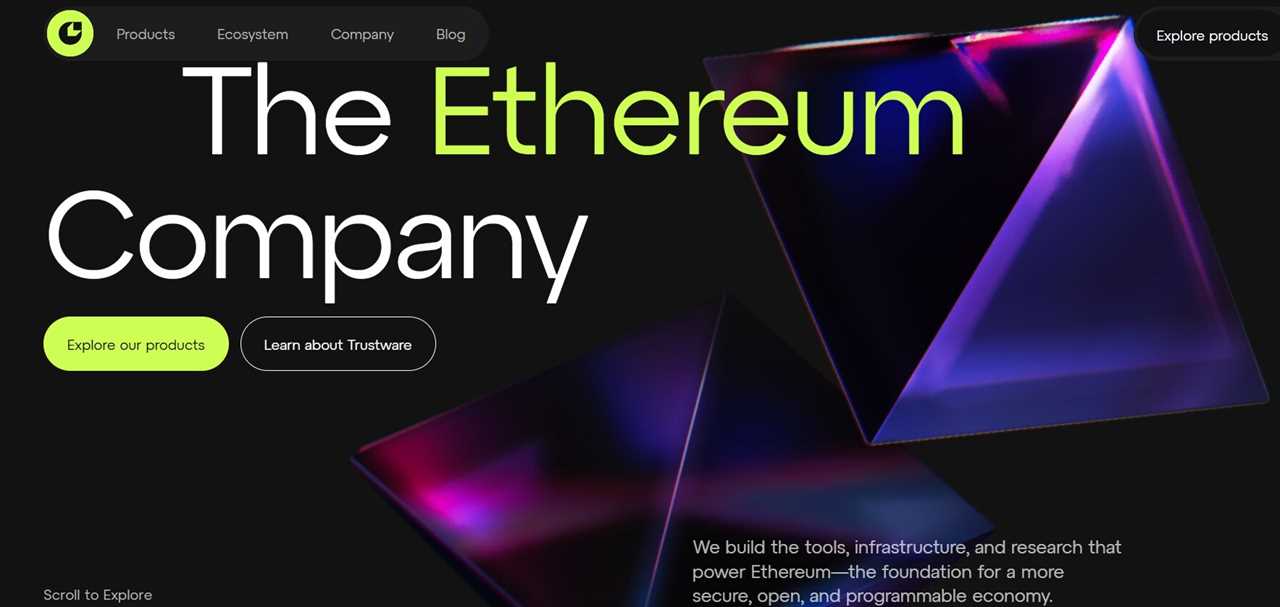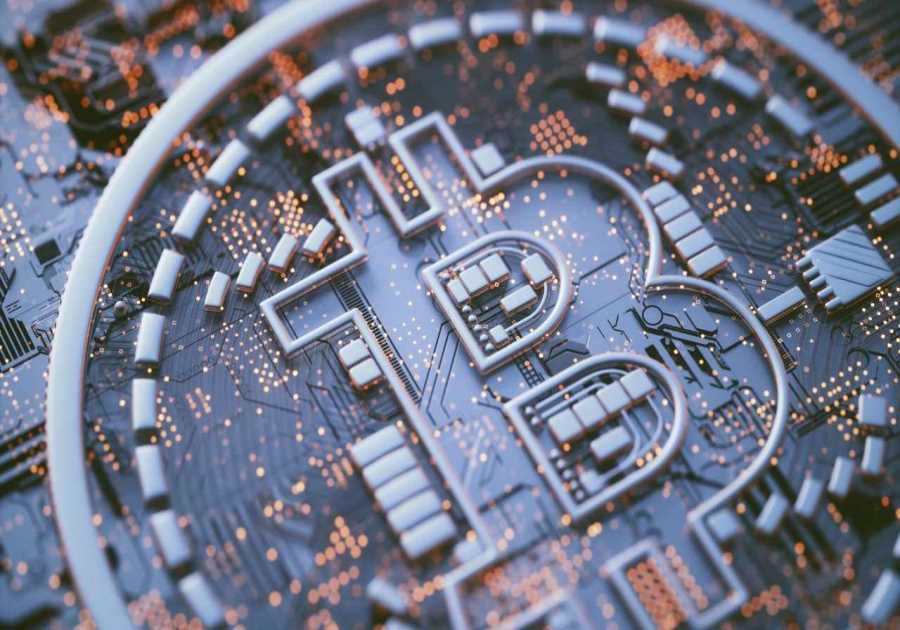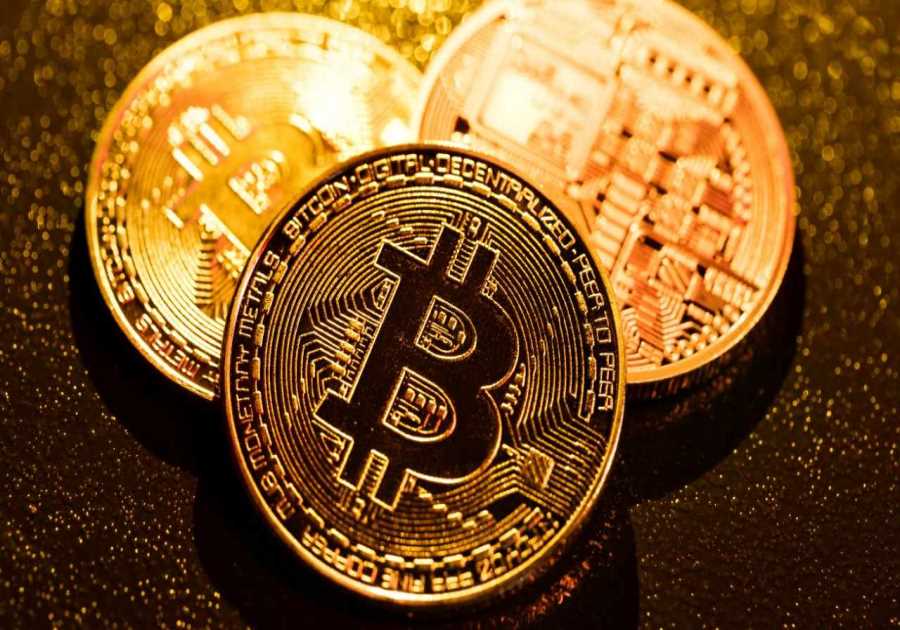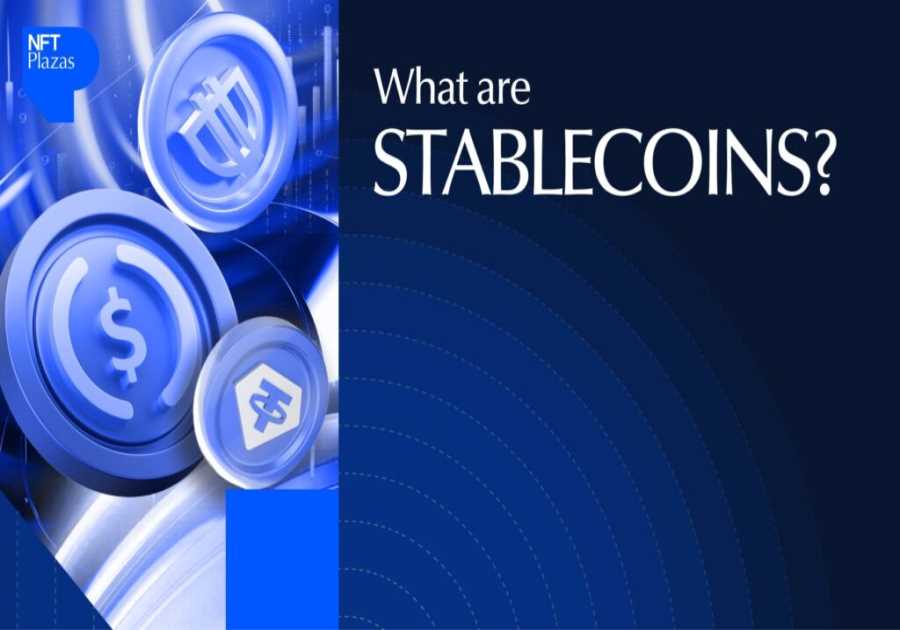Ethereum, the second-largest public blockchain network, still suffers from serious scalability and high gas fees problems during peak seasons. However, the entry of next-generation Layer-2 solutions leveraging zero-knowledge (zk) proofs like Linea is making a remarkable difference.
But what is Linea, and how is it positioning itself to transform the crypto space with faster and cheaper transactions? This article explores the L2 solution built by Consensys that is becoming a capable scaling solution on the market.
What is Linea?
Linea is a Layer 2 (L2) blockchain project built by Consensys, designed to address the scalability challenges affecting the Ethereum Mainnet. The zero-knowledge (zk) rollup project can safely scale the Ethereum blockchain while preserving decentralization and security. Linea leverages a Type 2 zkEVM Layer‑2 scaling network, meaning it fully resembles the Ethereum Virtual Machine (EVM). As a result, users can easily develop and deploy DApps using existing smart contracts without needing to write code. Dubbed “Home Network for the World,” the project aims to serve as a center for users’ on-chain interaction and daily life.
Key Features of Linea Blockchain
Several key features make the Linea crypto project stand out in the crowded L2 blockchain space.
Zero-Knowledge Rollup (zk-Rollup)
Linea uses zero-knowledge (zk) rollup technology to enhance transaction processing by executing them off-chain. Afterwards, it bundles the multiple transactions into a single unit before posting on the Ethereum Mainnet. By using this approach, Linea removes the load from Ethereum, leading to faster and cheaper transactions.
EVM Compatibility
EVM equivalence is another of the Linea benefits because the project is fully compatible with the Ethereum Virtual Machine. As a result, developers can easily port any Ethereum-based DApps without struggling to implement modifications. The EVM compatibility includes development tools and smart contracts, meaning developers can easily adopt Lines.
Lower Fees and Scalability
By using the zk-rollup mechanism, Linea is capable of handling high transaction volumes at very low fees. That’s because the zero-knowledge rollup proofs ensure transaction processing is fast and efficient. This feature makes Linea an attractive option for DApps like DeFi and gaming that require a fast transaction throughput.
Security
Linea puts a lot of emphasis on security and uses state-of-the-art features to enhance safety. The platform utilizes advanced cryptography techniques like zkSNARKs and lattice-based cryptography to secure transactions. Moreover, Linea leverages Consensys’ partnerships and experience within the blockchain and cryptocurrency space.
How Does Linea Work?
The Linea network works by batching transactions off-chain and generating SNRK-based validity proofs that it submits to Ethereum for finality. Linea stands out from the crowd by facilitating instant finality and fast withdrawals instead of the traditional seven-day fraud-proof windows. The following is a simple breakdown of Linea technical architecture:
- Transaction Bundling: The project bundles transactions together off-chain on the Linea L2 network.
- Validity Proof Generation: Linea uses the zero-knowledge (zk) rollup cryptographic proof technique to verify the validity of bundled transactions. Linea accomplishes this without revealing individual transaction details.
- Mainnet Settlement: The zk-proof submits the transactions to the Ethereum Mainnet for final verification. The Mainnet finalizes the transactions after verifying the zk-proof and authenticating its validity.
What Is ConsenSys?

Consensys was founded in 2014 by Ethereum co-founder Joseph Lubin. The aim was to create applications and infrastructure that would support the Ethereum ecosystem by developing DApps on the blockchain. Consensys currently ranks as an integral player within the cryptocurrency infrastructure space. Some of the company’s leading products include the world’s leading browser-based wallet, MetaMask. Others are smart contract development infrastructure Truffle and crypto development suite Infura.
Consensys first unveiled the first public Linea testnet in March 2023 using their zero-knowledge Ethereum Virtual Machine (zkEVM). The layer 2 solution was built on Ethereum and was released simultaneously with Polygon’s zkEVM on Mainnet. Following the successful public testnet launch, Consensys announced it would roll out the Linea Mainnet alpha.
What Is Linea Mainnet?
The launch of the Linea Mainnet Alpha enabled the Line ecosystem to begin partnerships gradually before the public launch. The project onboarded over 100 strategic partners, including trailblazers like PancakeSwap, Uniswap, and others. The project has also integrated MetaMask with its in-built bridging, swapping, and buying features, fully supported.
To ensure the Mainnet alpha release was effective, the development team spent considerable time running tests. The firm tested different upgrades of its architecture to enhance its performance, user experience, and reduce transaction costs. All this was aimed at ensuring it meets its objective of building a secure, durable, efficient, and user-friendly L2 rollup.

The release of Linea Mainnet Alpha introduces many benefits to developers, builders, and users within the Ethereum ecosystem. The release means a faster transaction throughput and affordable transaction fees compared to the Ethereum L1 blockchain. The improvement opens a floodgate of possibilities for developing scalable Ethereum DApps.
Linea’s partners will also soon begin to migrate to the Mainnet Alpha release and make available an even wider range of scalable DApps. Some of the areas that could benefit from this launch include decentralized social networks and gaming applications. Other potential areas would be identity solutions and non-fungible tokens (NFTs). By leveraging Linea’s enhanced scalability, the DApps will achieve faster transaction processing at lower cost and foster innovation within the Ethereum ecosystem.
Linea (LINEA) Tokenomics
The Linea Token is the native token for the Linea ecosystem, but won’t be used as a gas token. Instead, the platform uses ETH as gas. Linea is designed to be used for funding users, builders, and liquidity providers, including Ethereum public goods. Users can also earn Linea tokens when they participate in the network’s growth. Access to the token will be granted through using the token and not necessarily capital.
Linea announced the tokenomics model for the 72 billion tokens, which represents 1,000x the initial circulating supply of ETH. The project allocated 85% to the ecosystem and the remaining 15% to Consensys treasury.
Here is the breakdown of the Linea token allocation:
- Ecosystem fund: 75%
- Early contributors: 10%
- Consensys Treasury: 15%

Project Background
Linea is among a growing number of L2 projects built associated with the Ethereum blockchain. The platform rolled out its Testnet in March 2023, followed by the Mainnet launch later in July 2023. It is believed that at least 5 million MetaMask wallets participated in the Mainnet and Testnet launches.
One week after the Mainnet launch, Linea introduced an NFT airdrop for users. The NFT collection dubbed the Linea Voyage comprised art pieces based on contributions made to the network. The NFTs highlighted the emergence of a worldwide network telling the stories of the stages of the project’s development and growth.
Funding and Investments
Instead of pursuing its separate financing, Linea’s funding was facilitated by its parent company, ConsenSys. The firm managed to raise over $726 million between 2019 and 2022 through at least four financing rounds. The fundraisers attracted several big names from the investment fraternity.
Among the main contributors were companies like Coinbase Ventures and Dragonfly. There were also contributors from the conventional finance sectors, including SoftBank, Microsoft, and Temasek, among others. The list of contributors shows the project attracted a broad appeal, highlighting the belief in its potential.
What is Linea Voyage?
Linea Voyage refers to a nine-week campaign announced by the Linea network soon after the launch of the public testnet. The aim was to help orient beginners to the company’s ecosystem and the available applications on the testnet. The Linea Voyage project covered all the available verticals within the ecosystem, from decentralized finance to bridging. Other functionalities involved included social apps, gaming, and the use of on-chain analytics, tools, and infrastructure.
The campaign attracted over 5.5 million wallets that generated more than 47 million on-chain transactions. Participants were able to claim several commemorative NFT rewards that were tiered according to points earned. Linea Voyage was the project’s way of recognizing and incentivizing the community’s contribution across the past, present, and future. Voyage XP tokens were later introduced as a harmonized way to measure the users’ contribution to the Linea network.
Linea Voyage XP tokens (LXP)

The Linea Voyage XP tokens replicate the video and role-playing games where a user’s character gains experience points (XP). As the game progresses, the user’s Linea Voyage LXP portrays their journey and experience within the Linea ecosystem. Eventually, the Voyage LXP tokens will get converted into custom ERC-20 tokens that are visible in a user’s MetaMask wallet.
Voyage LXP tokens are only usable within the Linea ecosystem and are therefore non-transferable. The tokens can only be distributed within the Linea community to promote the growth of the Linea network. While they may not have any monetary value, they are a measurable contribution metric to the development of the project. Voyage LXP owners become eligible to receive other benefits within the Linea ecosystem.
Linea’s Ecosystem and Use Cases
The Linea network goes beyond simply offering a Layer 2 solution to the Ethereum blockchain. The project provides a diverse and vibrant ecosystem for several DeFi platforms and protocols. Linea also offers numerous services within the Web3 space:
Velocore
This decentralized exchange facilitates swapping of any ERC-20 tokens on the Linea network with high liquidity and low slippage. Linea uses its constant product market maker (CPMM) algorithm to integrate other DEXs within the Linea and Ethereum networks. The platform allows users to provide liquidity to multiple token pairs to earn fees and rewards. Moreover, users can also automatically compound their earnings with a click of the button. Velocore is currently among the most popular platforms within the Linea network, with over 50,000 users and over $100M TVL.
Linea Safe
Linea Safe is the network’s smart wallet that enables users to manage assets, access DApps, and execute transactions within the network. The wallet also acts as the gateway to the broader Linea ecosystem and the world of Web3. Linea Safe supports multiple devices, multiple signatures, and accounts, and implements biometric authentication and wallet recovery. The wallet is based on the Safe project, a trusted solution for Web3 security, making it a secure and user-friendly application.
Chainlink
Linea integrates Chainlink, a decentralized oracle network offering reliable data feeds to the platform. The oracles connect smart contracts to external sources, including weather conditions, market prices, and sports outcomes. Developers within the network can leverage Chainlink’s data infrastructure to develop gaming, DeFi, and asset tokenization DApps.
How to bridge ETH or tokens to Linea
The following is the step-by-step process of bridging ETH or tokens to the Linea network:
- Step 1: Access the Linea Bridge: Begin by visiting the official Linea Bridge interface
- Step 2: Connect your Wallet: Navigate the dashboard and click “Connect Wallet,” where you will select your preferred wallet
- Step 3: Choose Networks and Assets: Click on “Select Mainnet” as your source network and “Linea” as your destination network. Next, you will select the asset you intend to bridge, such as ETH or any other ERC-20 token.
- Step 4: Input Amount and Confirm: Enter the exact amount of the asset you intend to transfer. Before moving forward, carefully review the entered details and confirm the transaction within your wallet.
- Step 5: Claim Funds on Linea: Once the bridging process is confirmed and complete, claim your funds by clicking on “Claim Funds) on the bridging interface.
Conclusion
Linea stands out as an innovative L2 solution designed to address the nagging scalability challenges within the Ethereum Mainnet. The platform introduces a level of flexibility enabling developers to build DApps without needing to be experts in zero-knowledge technology. The platform’s architecture helps accelerate transactions and reduce costs while preserving the security and decentralization principles of Ethereum.
As the network grows with the support of its parent company, ConsenSys, the future looks promising. Linea is poised to offer fresh opportunities for active participants, builders, and early adopters. Linea could become a core pillar of the Ethereum network and facilitate widespread adoption.
FAQs
Can I use Linea with MetaMask?
Linea is pre-configured in MetaMask and, as a result, it is fully compatible with the wallet. You don’t need to connect MetaMask manually.
What makes Linea different from other Layer 2 networks?
Linea separates itself from the L2 blockchain space because of its EVM equivalence and the use of zero-knowledge (zk) rollups. As a result, users don’t need any modifications to deploy existing Ethereum smart contracts. Moreover, the use of zk rollups facilitates low fees and high throughput. Also, the Linea network burns 20% gas fees in ETH, further promoting Ethereum’s deflationary economics.
Does Linea have its token?
Because of its EVM-equivalence, the Linea network has used Ether as its native token. Users still need to have ETH to pay gas fees. However, there are plans to officially launch the Linea Token on a date that is yet to be announced. The launch could completely redefine the L2 blockchain landscape.
What tokens are on Linea?
According to the platform, the most swapped tokens within the Linea network are Wrapped Ether, USDC, Tether USD, and Foxy.
The post What is Linea? A Guide to the ZK Ethereum Layer 2 Network appeared first on NFT Evening.
Read MoreBy: Amit Chahar
Title: What is Linea? A Guide to the ZK Ethereum Layer 2 Network
Sourced From: nftevening.com/what-is-linea/?utm_source=rss&utm_medium=rss&utm_campaign=what-is-linea
Published Date: Sun, 10 Aug 2025 07:00:48 +0000
----------------------------
Did you miss our previous article...
https://trendingincrypto.com/nft-news/what-is-binance-coin-bnb-and-how-does-it-work
.png)





